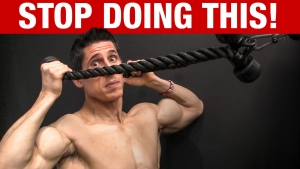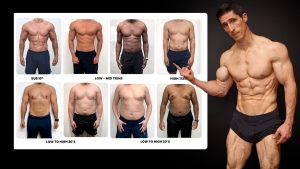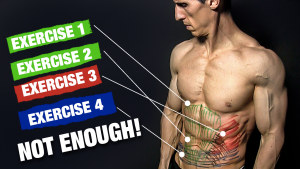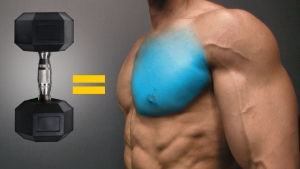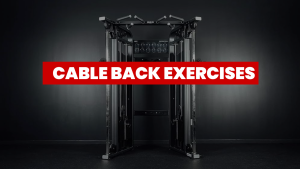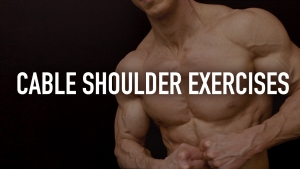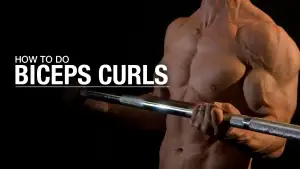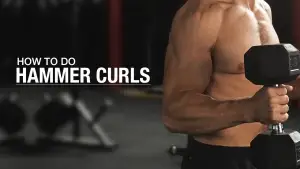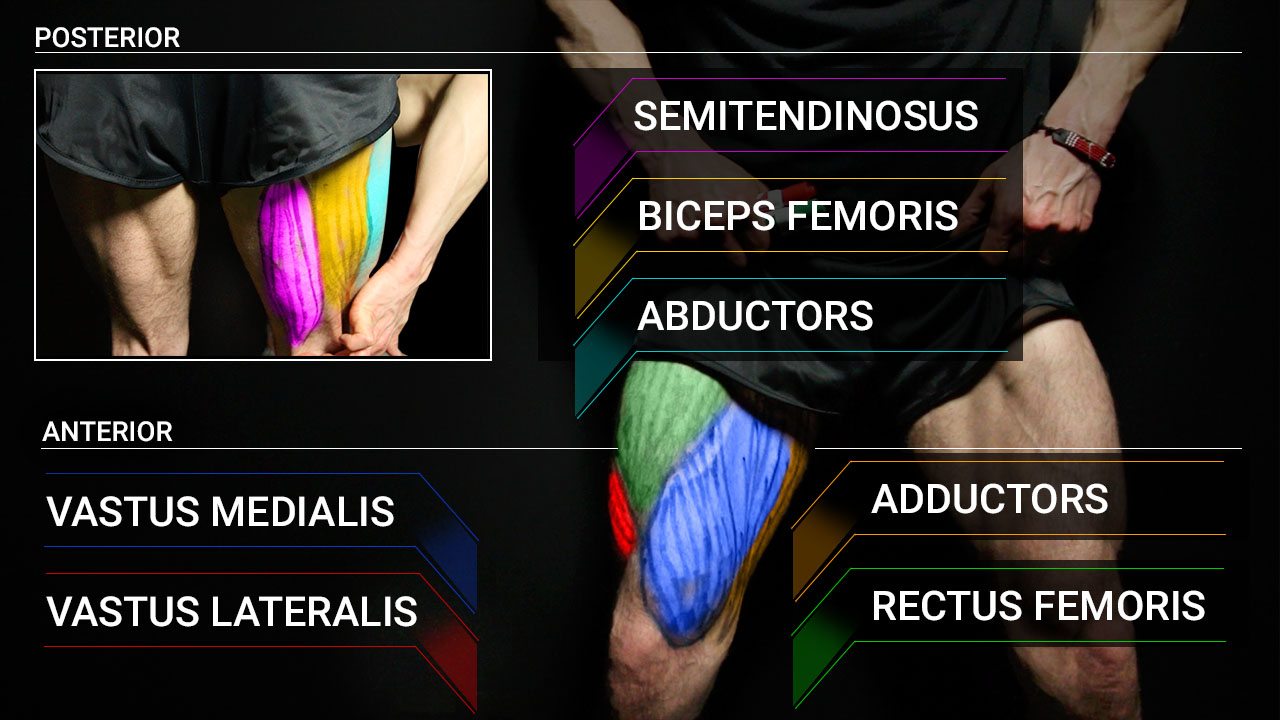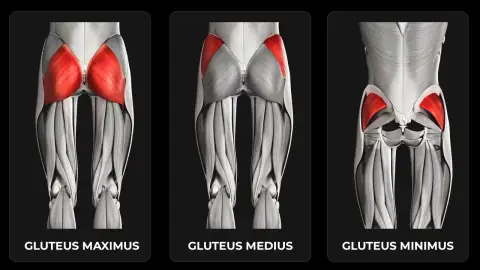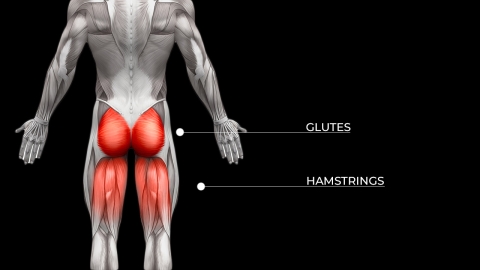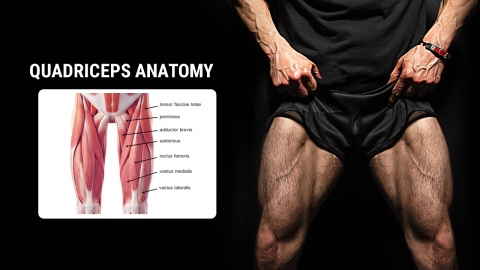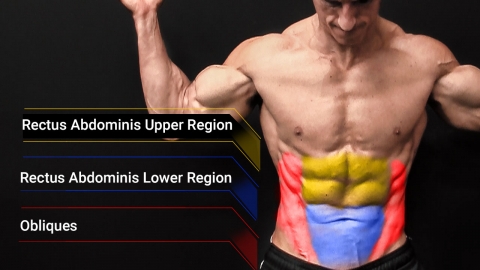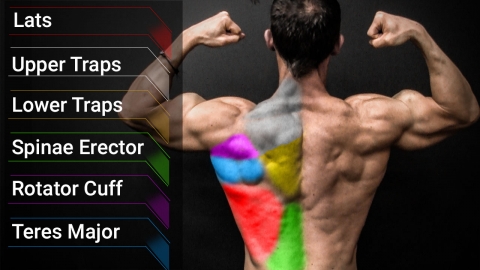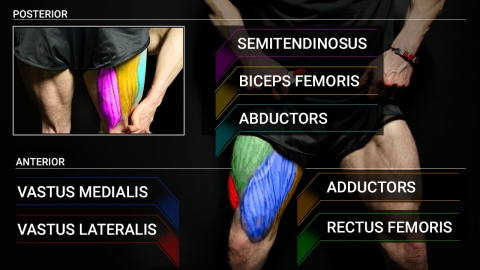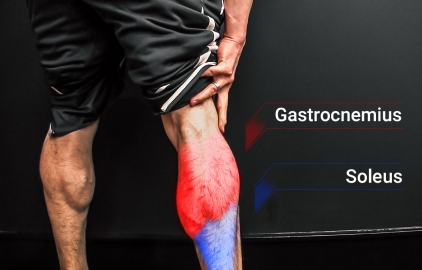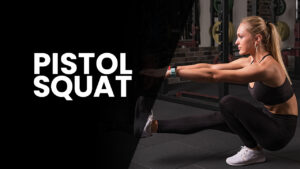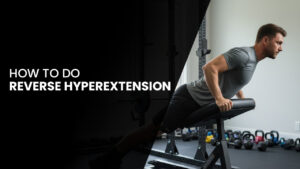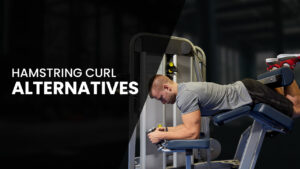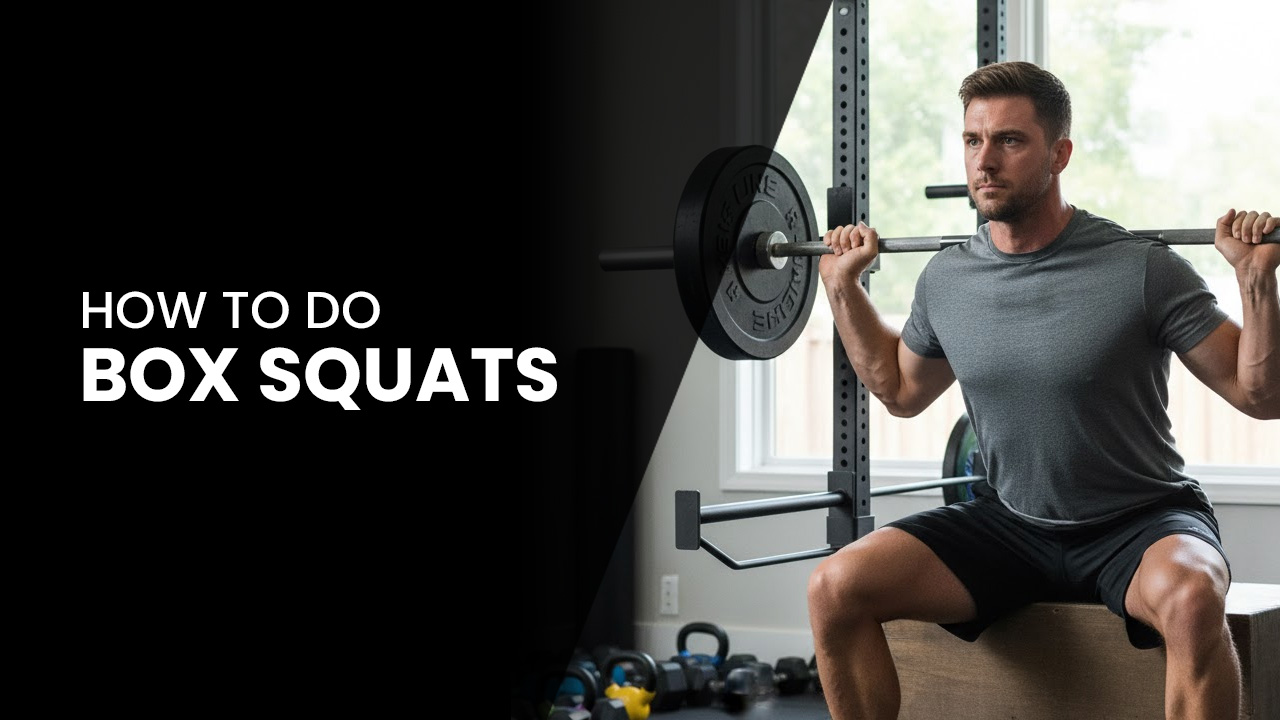
WHY do box squats?
What should build explosive power has turned into the fitness world’s favorite way to sit down and call it barbell training.
The problem is that most lifters treat the box like a break, not a tool.
But the Box Squat isn’t a rest stop. It’s a masterclass in control, tension, and strength development.
Every rep should teach you how to own the eccentric phase, stay locked in during the pause, and explode through the concentric phase with power and precision.
This one exercise builds your posterior chain, protects your knees, and engrains perfect squat technique… but only when you do it right. Done wrong, it’s a one-way ticket to sloppy form, achy joints, and wasted squat workouts.
By the end of this guide, you’ll know exactly how to set the correct box height, brace core muscles, and use this movement to develop true athletic strength.
WHAT IS A BOX SQUAT?
Most people think they know what a Box Squat is. You sit down, stand up, repeat, right? Not quite.
Box Squatting forces you to move with awareness in every phase of your squat, build real strength from a dead stop, and fix the bad habits you’ve been hiding in your regular squat.
It’s a variation of the Back Squat where you lower onto a box at a controlled depth, pause momentarily, and then drive back up explosively.
The goal isn’t to rest on the box. It’s to own your movement. By taking momentum out of the equation, you teach your muscles to produce power from a dead stop.
The box height can be adjusted depending on your mobility, goals, and range of motion but the principle stays the same: control the descent, stay tight, and explode up.
WHY BOX SQUATS MATTER
The Box Squat’s main purpose is to improve hip hinge mechanics, depth awareness, and posterior chain activation.
It strengthens your glutes, hamstrings, and lower back while reinforcing proper alignment through your core and spinal erectors.
Think of it as a movement that forces you to earn your squat depth.
You’ll learn to push your hips back, keep your chest tall, and maintain tension through the eccentric and concentric phases.
These are the same mechanics that transfer directly to your Traditional Squat, Box Jumps, or any explosive lower-body training.
COMMON MISCONCEPTIONS
One of the biggest mistakes people make with the regular Box Squat is treating the box like a bench.
The moment you relax at the bottom, you lose tension in your core and glutes, killing your power and dumping stress onto your knees and spine.
The box isn’t a place to rest. It’s a checkpoint for internal feedback.
Another common error is bouncing or rocking off the box to get back up. That completely defeats the purpose of the movement.
Instead, you should lower under control, make a deliberate pause to eliminate momentum, and then drive upward with intent.
When performed correctly, the box squat becomes a serious tool for power.
It teaches your body how to generate force from a dead stop, reinforces tension training, and builds the kind of explosive reversal strength that translates directly into bigger lifts and better athletic performance.
BENEFITS OF BOX SQUATS
The Box Squat isn’t a gimmick or a minor twist on the Traditional Squat. It’s a completely different lesson in how to move and produce power.
Every inch of the lift forces you to slow down, feel your mechanics, and build strength where it counts.
Instead of relying on momentum or the stretch reflex, you’re training your body to generate force from a dead stop, a skill that separates lifters who just move weight from athletes who move with intent.
Done right, the Box Squat develops strength and power through every phase of the movement.
It improves mobility, sharpens body awareness, and keeps your joints healthy enough to keep training hard for years.
Here’s what makes it one of the most valuable tools in any serious strength program.
STRENGTH AND POWER DEVELOPMENT
The Box Squat is a masterclass in building power from a dead stop.
By eliminating the stretch reflex, you’re forced to generate strength purely through your glutes, hamstrings, and core muscles during the lifting phase.
This makes every rep a strength-focused effort rather than a momentum trick.
From Bodyweight Box Squats to Heavy Box Squats with serious bar weight, this movement trains your ability to explode upward under control.
And that’s just something you can’t replicate with Air Squats or a typical squat routine.
Powerlifters use it to improve drive out of the hole and athletes use it to improve vertical jump mechanics and sprint acceleration.
It’s the perfect link in your eccentric-concentric chain, teaching your body to fire hard and fast when it counts.
POSTERIOR CHAIN ACTIVATION
If your quads dominate every squat, the Box Squat will fix that fast.
By sitting back onto the box, whether it’s a plyo box, a squat box, or even a weight bench, you shift the load toward the hips and hamstrings, forcing your posterior chain to do the heavy lifting.
This makes the Box Squat an excellent exercise for targeting weak glutes and hamstrings while improving hip drive.
You’ll build strength that carries over into Bulgarian Split Squats, Deep Back Squats, and cross training movements.
Keep your core tight, maintain a stable position, and you’ll quickly feel the difference in your overall lower-body development.
SQUAT MECHANICS AND DEPTH
One of the biggest advantages of typical Box Squats is that they teach you how low to go.
The box gives you instant feedback on squat depth, helping you find your ideal range and maintain proper form without collapsing your chest or rounding your back.
It doesn’t matter if you’re using adjustable squat boxes or a box step exercise platform, setting the right box height ensures you’re training at the proper depth for your current mobility and goals.
Over time, you can lower the height to safely increase your range of motion and progress toward deeper ranges.
JOINT PROTECTION AND INJURY PREVENTION
The Box Squat isn’t just about building power. It’s about preserving it.
By reducing momentum and focus on the eccentric muscle work, you take unnecessary strain off your knees, hips, and lower back.
The controlled degrees of knee flexion make it ideal for anyone dealing with achy knees or coming back from an injury under the supervision of a medical professional.
Because you’re able to manage the weight load and preferred height of the box, you can fine-tune your training to match your mobility level.
Even light weight work like Goblet Squats or bodyweight exercises can build core stability and confidence before progressing to additional weight plates and power lifting intensities.
BOX SQUATS: MUSCLES WORKED
The Box Squat isn’t just about sitting back and standing up. It’s about feeling every phase of the lift.
Instead of simply moving the bar from point A to point B, the focus shifts to building a deep connection with every muscle that powers the lift.
When you can feel which muscles are firing, you turn a basic strength move into a complete system for power and performance.
Here are the muscles that the Box Squat targets and how each one contributes to real strength, stability, and athletic development.
GLUTES
The gluteus maximus sits at the back of your hips and serves as the engine of the movement.
During the Box Squat, it’s the muscle responsible for generating hip extension as you rise from the pause on the plyometric box, producing the explosive drive that defines the lift.
Keeping your core tight and pressing through the heels keeps the glutes engaged and spares the lower back from excess strain.
Well-developed glutes create the foundation for muscular development, sprint acceleration, and vertical jump performance, skills that carry over into every form of strength training and athletic development.
HAMSTRINGS
Running down the back of your thighs, the hamstrings take care of both the descent and the lift.
As you lower toward the box, they stabilize and decelerate the motion. And as you rise, they contract to extend the hips.
Because the Box Squat emphasizes sitting back rather than straight down, the hamstrings experience greater tension than in a Standard Squat.
Training at your ideal depth on an adjustable squat box amplifies this effect, improving posterior balance and knee stability over time.
QUADRICEPS
The quadriceps dominate the front of the thighs and act to extend the knee joint while supporting overall lower-body stability.
In the Box Squat, their role is to assist the glutes and hamstrings in driving the body up from the paused position and in maintaining control through roughly 90 degrees of knee flexion.
Proper technique ensures the quads stay active without overcompensating.
Balanced activation between the front and back of the legs is key to sustainable form to squats and long-term joint health.
CORE
Your core is the anchor of the lift, connecting upper and lower body power.
The rectus abdominis, obliques, and deep stabilizers hold the spine in neutral alignment, preventing chest drop and keeping the bar path efficient.
During the box squat’s mid-rep pause, tension often fades, which is a common mistake that weakens the lift and increases injury risk.
Maintaining intra-abdominal pressure, as if bracing for impact, keeps the trunk rigid and your power output high.
Strong core engagement doesn’t just improve your box squat, but it actually fortifies every movement that depends on balance and stability.
ERECTOR SPINAE (LOWER BACK)
These long, rope-like muscles line the spine and work to keep your torso upright.
They resist forward collapse as you sit back to your preferred height, maintaining spinal integrity under load.
Proper engagement of the erectors stabilizes the barbell position and allows you to transfer force efficiently from the legs through the torso.
A strong lower back supports both eccentric and concentric movements, reduces strain on the discs, and enhances posture across all workout routines, whether you’re moving your own body weight or grinding through a 630-pound squat.
ADDUCTORS
Found along the inner thigh, the adductors act as hip stabilizers and lateral supports during the squat.
As you descend and push your knees outward, the adductors engage to maintain alignment and balance.
They prevent knee cave, improve hip flexion and strength, and add power at the midpoint of the lift.
Ignoring them weakens the entire lower-chain structure while training them intentionally sharpens both squat position and athletic development.
CALVES
Situated at the back of the lower leg, the calves (particularly the soleus) work to stabilize the ankle and maintain balance throughout the squat.
Proper engagement here provides a solid base for the rest of the kinetic chain.
Training on an adjustable non-slip rubber squat ramp or flat platform reinforces ankle mobility and joint stability.
Supplementary muscle work like ankle weight leg curls or curls with bands further strengthens this connection, ensuring every lift starts from a steady foundation.
HOW TO DO BOX SQUATS
The Box Squat is a test of accuracy where every rep requires constant tension from start to finish.
And when you do it right, you reap some pretty serious rewards that benefit you across the board in terms of your performance.
But here’s the main thing to remember: You’re using the box as a target, not a seat, and that target forces you to hit your proper range every time.
This is one of those special exercises that completely changes how you understand lower-body strength.
Let’s break down exactly how to do Box Squats with perfect form for every rep:
BOX SQUATS
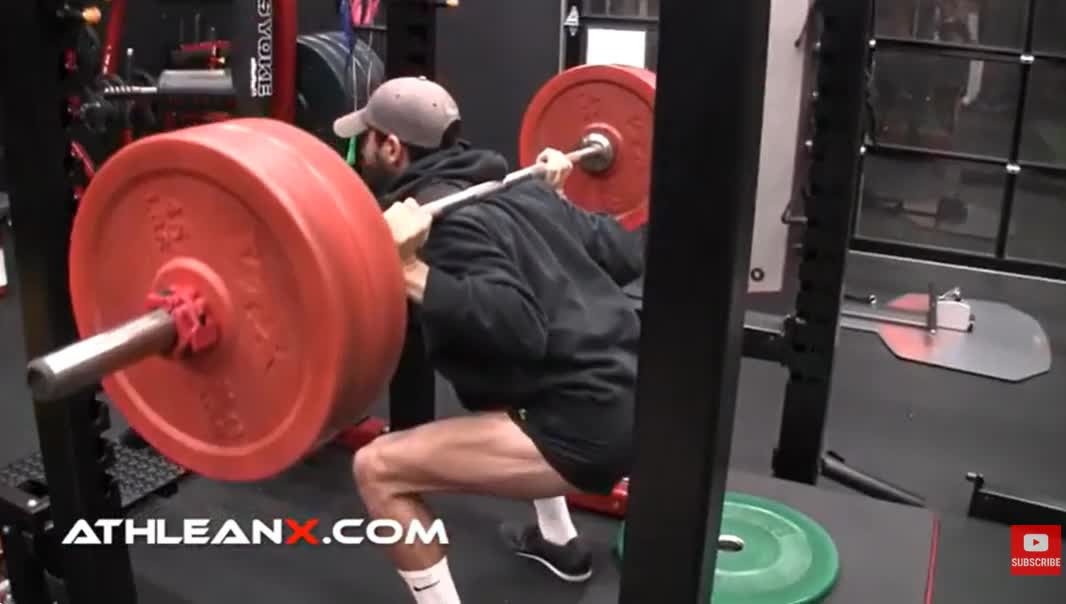
HOW TO DO BOX SQUATS:
- First, you’ll need to set up the box. Be sure to choose a height just below parallel, which is around a 90-degree knee angle.
- You can add or remove plates to fine-tune depth. The box is your target, not a seat.
- Next, let’s focus on bar positioning. Place the bar across your traps / upper back (or slightly lower for powerlifting).
- Squeeze shoulder blades together and brace your core tight. Keep band tension even if using resistance bands or chains.
- As far as foot placement, you’ll want to stand slightly wider than shoulder width, toes out 15 to 30 degrees.
- Push knees out in line with toes, chest level, hips back. Avoid an overly wide stance that limits depth.
- Initiate the descent with the hips, not the knees. Lower slowly, keeping tension through your core muscles and heels grounded.
- Lightly touch the box with your butt. Be sure you don’t drop or relax here. The muscles should still be engaged as you hold a 2 to 3 second pause. This will remove the stretch reflex and keep full-body tension.
- Finally, drive through heels, squeeze glutes, and explode upward. Keep core tight, knees tracking out, and finish tall without leaning forward.
- If all you have is a pair of dumbbells, you can use the same set-up and execution for the Dumbbell Box Squat.
WHAT MAKES IT EFFECTIVE: With the Box Squat, there’s no bounce, no momentum, and no room to hide weak points. By forcing a full stop at the bottom, this is one of those barbell exercises that develops true starting strength. And that is the kind of power that carries over to every lift and athletic movement. It builds body awareness, teaching you how to control tension and maintain position under load. The thing I love about it is that the box provides instant feedback on depth and mechanics, helping lifters refine technique while protecting the knees and lower back.
SINGLE-LEG BOX SQUAT

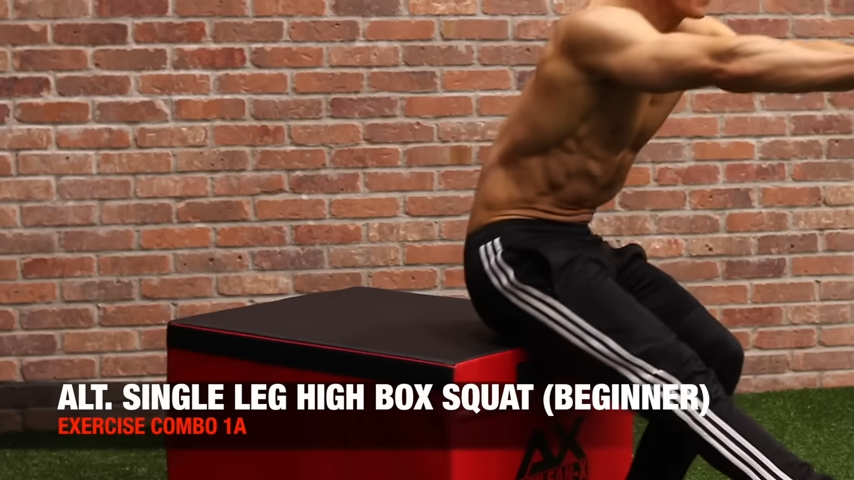
HOW TO DO THE SINGLE-LEG BOX SQUAT:
- Start sitting on a sturdy box or bench that’s roughly knee-height.
- Plant one foot flat on the ground in front of you and extend the other leg straight out so it’s hovering above the floor.
- Engage your core and pull your shoulders back to lock in good posture.
- Before you even move, tighten your working leg by pressing the foot into the ground slightly so the glutes, quads, and hamstrings are switched on.
- From here, drive through the heel and mid-foot of the planted leg to rise up smoothly.
- Keep your chest tall and eyes forward. Don’t let your torso collapse or your knee cave inward.
- At the top, stand tall and squeeze your glutes to finish the rep with full hip extension.
- When lowering back down, keep your arms out in front for balance and descend under full control.
WHAT MAKES IT EFFECTIVE: By working one leg at a time, you challenge the hip stabilizers, glutes, and quads far more than a standard Bilateral Squat or Competition Squat ever could. The glute medius and adductors fire hard to keep the knee aligned, while the core stays active to control the torso. The knee-height box acts as both a depth gauge and a safety net, helping you hit a consistent range of motion while reinforcing proper squat mechanics.
BOX SQUATS: COMMON MISTAKES
The Box Squat is one of the best lower-body builders in all of strength training, but it’s also one of the easiest to butcher.
Because it looks simple, most lifters skip the finer points of weightlifting technique that make it so effective.
The result is a watered-down version of one of the most precise lower body exercises you can perform.
Below are the most common mistakes when performing the Box Squat along with how to fix them.
DROPPING ONTO THE BOX
Many lifters mistake the box for a landing pad instead of a target.
When you drop or “plop” onto it, you transfer all the force to your spine and hips, completely removing muscular tension.
Not only does this erase the benefit of the dedicated pause, but it also risks jarring the lower back and pelvis.
The fix is simple but crucial: work on your descent.
Treat every inch of the lowering phase as resistance work. Lightly touch the box. Don’t crash down onto it.
That gentle contact keeps the muscles loaded and teaches you how to own the movement from start to finish.
RELAXING AT THE BOTTOM
This is the silent killer of the box squat. The moment you sit and relax, your core stability collapses and your gluteal muscles disengage.
That tension is your base of muscle development. If you lose it, you lose the lift’s benefits.
Instead of resting, stay active in the bottom position.
Brace the core, keep the hips engaged, and imagine you’re holding tension like a coiled spring. That active pause builds explosive power for the upward drive.
USING THE WRONG BOX HEIGHT
Box height determines everything about the lift. A box that’s too high turns your squat into a glorified half-rep, shortchanging the quads and glutes.
Go too low, and you’ll compromise your back position or lose balance.
The goal is to reach just below parallel (about a 90-degree knee angle) so that the hips, knees, and ankles share the load evenly.
Use adjustable height settings or add plates based on your current range and mobility.
The right height creates feedback, helping you learn where your true depth and control exist.
LOADING TOO HEAVY, TOO SOON
The Box Squat is not a test of how much you can hold. Lifters often ignore weight load guidelines and throw on plates before mastering the pause, stance, or depth.
That mistake kills form and increases injury risk.
Start with body weight, then gradually build up. Once you can maintain perfect form during the pause and keep your posture rock solid, start adding small increments.
POOR SETUP AND POSITIONING
The Box Squat is about alignment and feedback. Setting up incorrectly, whether the box is too far behind, misaligned with your stance, or unstable, throws everything off.
If you use a conditioning-plyo jump box, make sure it’s firm and doesn’t compress under load.
If you’re on an uneven surface or wrong adjustable position, your bar path will shift, and your balance will suffer.
The box should line up directly behind you so that your shins stay vertical when seated. Feet slightly wider than shoulder-width, chest level, core tight.
If you deal with training partners, have them spot your setup and check for symmetry before every set.
SKIPPING THE PAUSE
Too many lifters treat the bottom of the Box Squat like a quick bounce or a tap and go. That eliminates the movement’s benefits.
The pause is what makes this exercise special. It removes the stretch reflex, forcing your muscles to generate force from a dead stop.
When you skip it, you’re turning the lift into a Standard Squat with extra furniture.
Instead, lower under control, touch the box, and hold tension for two to three seconds before exploding upward.
That small window of stillness builds more strength than ten fast, sloppy reps ever could.
BOX SQUAT VS. TRADITIONAL SQUAT
At first glance, the Box Squat and Traditional Squat look like variations of the same move. Think about it. They have the same stance, same bar, and same direction of force.
But the difference is in the intent.
The Traditional Squat builds continuous tension and size while the Box Squat develops explosive strength and power by requiring you to generate force from a complete stop.
One tests how much you can move and the other tests how well you can move it. Let’s break down how they differ where it matters most.
RANGE OF MOTION: CONTROL VS. MOMENTUM
A Traditional Squat is a continuous movement where you descend, hit depth, and rise again in one fluid cycle.
That constant motion takes advantage of the stretch reflex, allowing your muscles to use stored elastic energy to rebound out of the bottom.
It’s great for high-volume strength and circuit training, keeping muscles under tension for hypertrophy.
The Box Squat stops that flow on purpose.
When you pause, even for a second, you lose the “free energy” that helps you out of the hole. Now, it’s all on you and your hips, glutes, and core must fire hard to move the load.
It’s the difference between riding the lift and owning it. The box gives you instant feedback on your range of adjustment, helping you develop precision in depth and control you can’t cheat.
MUSCLE EMPHASIS: FRONT LOAD VS. BACK DRIVE
In a Traditional Squat, the quads do most of the heavy lifting. As you descend, the knees travel forward, and the thighs carry the load.
It’s excellent for leg development, but it can easily become quad-dominant if your hips and hamstrings don’t keep up.
The Box Squat shifts the work posteriorly and the glutes, hamstrings, and lower back take center stage.
Because you sit back into the movement rather than straight down, you’re forced to hinge at the hip flexors, loading the muscles that drive true athletic power.
This posterior emphasis makes the Box Squat more transferable to explosive sports performance such as sprinting, jumping, or any movement that starts from zero.
Think of the Box Squat as a developer of backside horsepower. It strengthens the muscles responsible for hip extension and acceleration, while the common Barbell Squat builds the front-end torque of the movement.
TRAINING INTENT: MUSCLE GROWTH VS. POWER OUTPUT
The Traditional Squat is the workhorse of strength programs. It’s the go-to for muscle mass, metabolic stress, and total-body conditioning.
It fits perfectly in common workout templates, from beginner strength cycles to advanced circuit training. It builds size through volume, tension, and time under load.
The Box Squat, by contrast, is a refinement tool. It’s a piece of workout equipment designed for athletes who want better performance.
It’s not about doing more reps. It’s about doing fewer, better reps.
The pause at the box forces you to produce force without help from the stretch reflex, making it one of the best ways to build starting strength and explosive power.
It’s also easier to individualize because the adjustable height and adjustable positions of the box let you target specific weak points in your squat pattern.
When combined with resistance bands (pay attention to band tension percentage) or chains, the Box Squat becomes a progressive overload machine.
It teaches you how to accelerate through the full range of motion, improving power output and bar speed and these are things that Traditional Free Squats can’t isolate as cleanly.
REAL-WORLD APPLICATION: TENSION, FEEDBACK, AND APPLICATION
If you’re training for physique and size, the Traditional Squat remains king. Its uninterrupted tension and volume are unmatched for hypertrophy.
But if you’re chasing athletic development, or simply want to move better, the box squat gives you the edge.
It provides immediate feedback on your depth, positioning, and form since every rep tells you something about your body’s control.
The pause sharpens your awareness of what’s tight and what’s loose. You’ll learn to brace better, engage your glutes more efficiently, and fix the sticking points that hold back your heavy lifts.
In the end, the Box Squat doesn’t replace the Traditional Squat. That’s the wrong way to look at it. I’d say that it refines it.
The Traditional Squat builds your body while the Box Squat builds your ability to use it. Together, they form a complete system for strength and performance.
In other words, be sure to use both in your lower body workouts!
PROGRAMMING BOX SQUATS
Most lifters treat programming like an afterthought, but how you structure the Box Squat determines whether it builds power or just burns time.
This lift trains your body to explode from stillness with accuracy, but only if you use it strategically in your workouts.
Here’s how to program Box Squats into your routine for strength, speed, and athletic performance.
MAKE IT A MAIN LIFT
The Box Squat deserves a primary slot in your lower-body power day. Treat it like your Back Squat or Deadlift, not an accessory.
The goal is to train the ability to produce force from a dead stop, so technique and speed matter more than total load.
Work in 3 to 5 sets of 3 to 5 reps, using 70 to 85% of your one-rep max (1RM). This range strikes the balance between strength and acceleration.
FOCUS ON SPEED, NOT FATIGUE
Unlike hypertrophy training, the Box Squat rewards velocity over volume. Each rep should be crisp and explosive, with zero wasted motion.
You’re teaching your body how to generate maximum power, not just endure more sets.
Take 2 to 3 minutes of rest between sets to keep every rep high-quality.
PAIR IT WITH THE RIGHT ACCESSORIES
Once your main work is complete, reinforce the same movement patterns with accessory lifts that target the posterior chain. I’d recommend some of the following:
- Romanian Deadlifts: Extend the hamstring tension developed during the box squat.
- Glute Ham Raises: Build strength in the exact muscles responsible for your upward drive.
- Hip Thrusts: Add more glute activation to complement your explosive power.
- Single-Leg Work: Use Bulgarian split squats or step-ups to fix imbalances and stabilize your base.
CYCLE IT INTO YOUR PROGRAM
For strength and performance athletes, be sure to program Box Squats in 4-to-6-week blocks before transitioning back to Traditional Squats.
This keeps your nervous system fresh and reinforces perfect form under controlled depth.
If you’re using it year-round, alternate between heavier strength-focused phases (3×3 at 80–85%) and lighter power phases (5×3 at 60–70%) to train both ends of the force-speed spectrum.
The Box Squat is more than a squat variation. It’s a test of patience and pure strength.
It teaches you how to generate power without momentum and move with perfect form under load.
Master the setup, the pause, and the drive, and you’ll build a stronger, more explosive foundation for everything you do in the gym.
Check out our complete line of ATHLEAN-RX Supplements and find the best training program for you based on your fitness level and goals.

- What makes the box squat unique is that it removes every shortcut. There’s no rebound, no stretch reflex, and no wasted motion.
- By pausing at the bottom and driving up from a dead stop, you build true starting strength, explosive power, and flawless technique that carries over to every other lift and athletic movement.
- Here’s how to do Box Squats with perfect form:
- Set up a sturdy box or platform just below parallel. Make sure it’s low enough that your thighs hit around a 90-degree angle at the bottom.
- Step under the bar, pull your shoulder blades together, and create full-body tension before you even take it off the rack.
- As you descend, push your hips back first, keeping your core braced and your chest tall. Control the negative like you’re lowering onto thin glass. Move slowly and steady with no free fall.
- When you reach the box, lightly touch it and pause for a second. Don’t sit or relax. Stay tight through your glutes, hamstrings, and abs.
- Then drive up explosively, pushing through your heels and squeezing your glutes at the top.
- Every rep should feel deliberate. That means smooth on the way down and powerful on the way up.
- The pause at the bottom is the key because it forces you to build strength from zero and develop true control over your squat.
BOX SQUATS FAQ
The Box Squat teaches what most lifters skip over: control. It forces you to move with precision instead of momentum.
Every rep starts from a dead stop, meaning there’s no rebound, no elastic energy, and no hiding weak points.
You have to create power entirely on your own. This makes the Box Squat one of the best ways to develop starting strength, which is the ability to go from zero to full force instantly.
It also provides immediate feedback on your form. The box shows you exactly where you’re hitting depth and whether your hips, knees, and chest are moving in sync.
For athletes, that control translates to better acceleration, stability, and power generation. And for lifters, it builds stronger glutes, hamstrings, and a rock-solid core.
The Traditional Squat is all about continuous motion. You lower under tension, hit depth, and come up in one smooth movement.
The muscles stay under constant load, using stored elastic energy (or the stretch reflex) to rebound out of the bottom. That’s great for muscle growth and general strength.
The Box Squat removes that advantage entirely. When you pause on the box, you eliminate momentum and force your muscles to produce all the power from a static position.
It’s slower, more deliberate, and far less forgiving of sloppy form.
You’re also sitting back farther rather than straight down, which shifts more load onto the posterior chain.
That makes Box Squats excellent for improving hip drive, fixing depth inconsistencies, and reinforcing proper squat mechanics.
When performed correctly, yes, Box Squats can be significantly easier on the knees. The key difference is how the movement loads the body.
A Traditional Squat often drives the knees forward, placing more stress on the joint, especially if mobility or control is lacking.
The Box Squat teaches you to sit back into the movement, activating the hips and hamstrings first, which helps share the workload across multiple joints and muscles instead of dumping it all onto the knees.
The pause on the box also helps reduce shear force because there’s no rebound or uncontrolled descent. It’s a more stable, joint-friendly way to strengthen your legs, especially for lifters dealing with knee pain, hip pain, or recovering from overuse.
Now, with all that said, it still demands good form. You can’t relax or collapse onto the box.
Keep your core braced, your knees tracking out, and your descent controlled. Do that, and Box Squats can be one of the safest, most joint-resilient movements in your entire lower-body routine.
REFERENCES
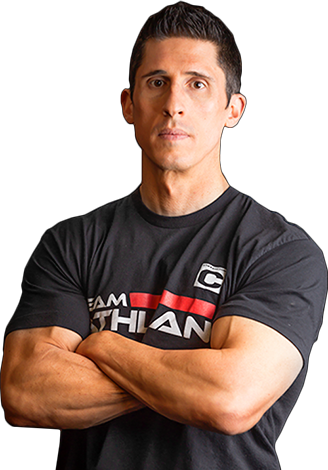
Jeff Cavaliere M.S.P.T, CSCS
Jeff Cavaliere is a Physical Therapist, Strength Coach and creator of the ATHLEAN-X Training Programs and ATHLEAN-Rx Supplements. He has a Masters in Physical Therapy (MSPT) and has worked as Head Physical Therapist for the New York Mets, as well as training many elite professional athletes in Major League Baseball, NFL, MMA and professional wrestling. His programs produce “next level” achievements in muscle size, strength and performance for professional athletes and anyone looking to build a muscular athletic physique.
